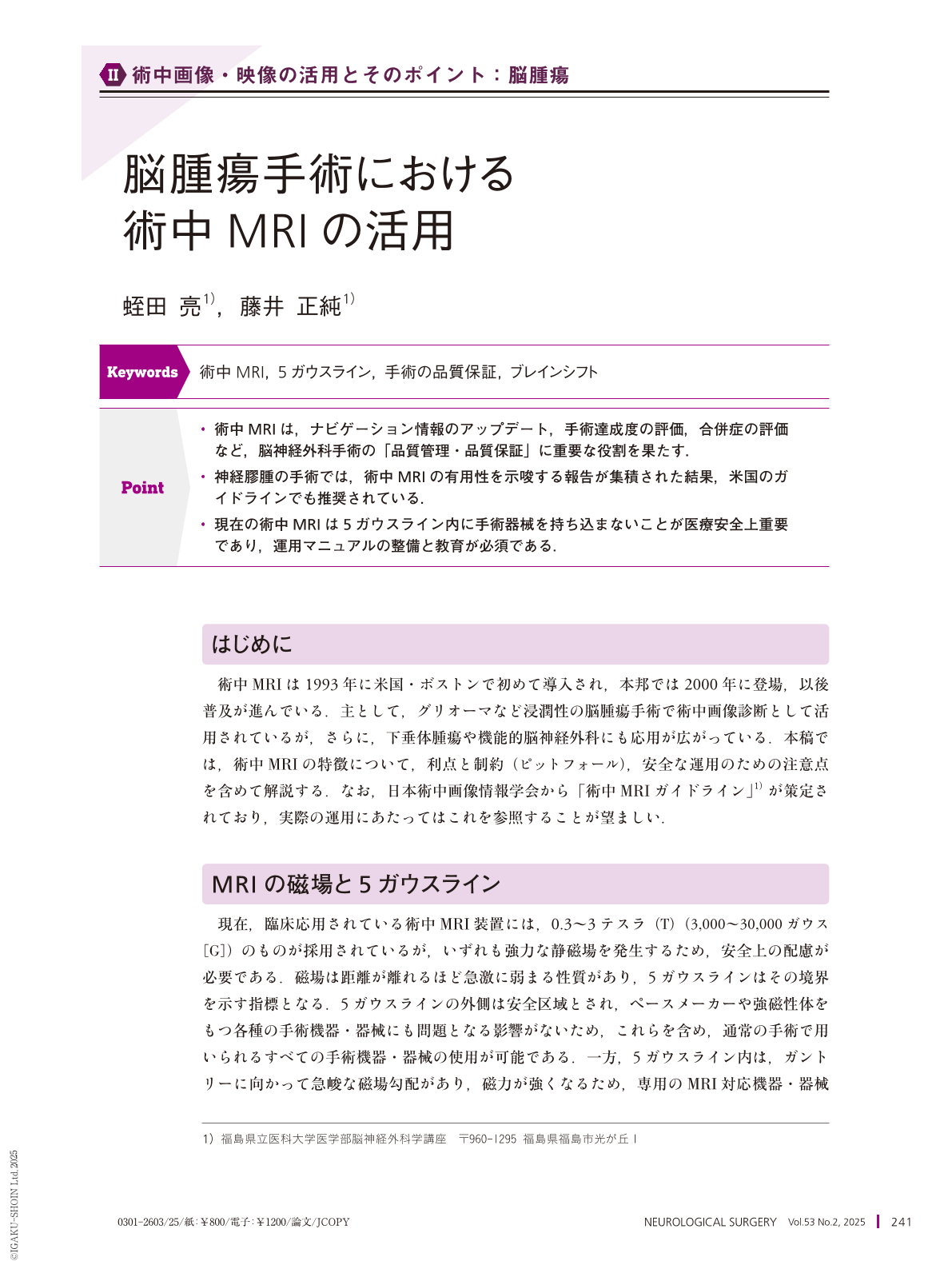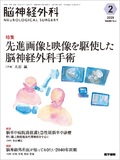Japanese
English
- 有料閲覧
- Abstract 文献概要
- 1ページ目 Look Inside
- 参考文献 Reference
Point
・術中MRIは,ナビゲーション情報のアップデート,手術達成度の評価,合併症の評価など,脳神経外科手術の「品質管理・品質保証」に重要な役割を果たす.
・神経膠腫の手術では,術中MRIの有用性を示唆する報告が集積された結果,米国のガイドラインでも推奨されている.
・現在の術中MRIは5ガウスライン内に手術器械を持ち込まないことが医療安全上重要であり,運用マニュアルの整備と教育が必須である.
Intraoperative MRI (iMRI) is an invaluable modality that enhances quality control and assurance in neurosurgical procedures. Its principal function is to recalibrate navigational datasets, compensating for brain shift and ensuring optimal surgical precision throughout the procedure. Additionally, iMRI facilitates the intraoperative assessment of surgical endpoints, such as confirming the extent of resection and verifying whether gross total resection has been achieved. Moreover, it plays a pivotal role in detecting occult intraoperative complications, including intraprocedural hemorrhage, which might not be evident through direct visual assessment alone. In glioma surgery, the integration of iMRI significantly improves resection quality and may lead to prolonged overall and progression-free survival. This has led to recommending iMRI in established U.S. clinical guidelines. Stringent adherence to magnetic field safety protocols is paramount when implementing iMRI systems. It is crucial to prohibit the presence of ferromagnetic surgical instruments and use of MR-compatible devices within the 5-gauss line to avoid potentially catastrophic projectile incidents or equipment malfunctions. Furthermore, establishing comprehensive institutional protocols and rigorous training programs for all personnel is mandatory to ensure compliance with safety standards and maintain procedural integrity.

Copyright © 2025, Igaku-Shoin Ltd. All rights reserved.


